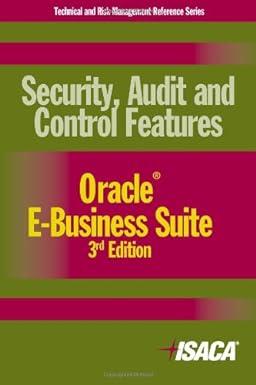Question
Rios [Rio Tino Ltd] latest climate change report, released in February, says that it has modelled the likely performance of its assets at a range
Rios [Rio Tino Ltd] latest climate change report, released in February, says that it has modelled the likely performance of its assets at a range of carbon prices, including the global $US120-a-tonne equivalent that experts say are probably necessary to keep global warming to less than 1.5C.
Rio concedes such a price, combined with other carbon abatement measures, would cut margins at its dominant iron ore division, which delivered $US17bn in underlying earnings in 2019, and threaten the viability of its two Australian aluminium smelters powered by fossil fuels.
The potential downsides to iron ore revenues from a greater use of scrap across the steel value chain are expected to be offset by upsides for aluminium and copper which are both essential for the electrification of the global energy system, including electric vehicles, and the deployment of low-carbon power solutions such as solar and wind, Rio said.
Importantly, the competitive position of our assets, both on industry cash cost and carbon intensity curves, is expected to protect the margins of our assets, even for commodities such as iron ore where we may face a negative impact on demand and price. In the case of aluminium, the attractiveness of our hydro-based assets is expected to increase relative to coal-based smelters, which would face increased carbon costs that may result in higher aluminium prices.
Rio has said a carbon price is an indispensable part of any strategy to combat climate change.
It says its greatest fear about the move to a carbon price as a means of combating climate change, however, was that the same price would not be applied by all global governments, putting some of its assets at a competitive disadvantage against producers in other jurisdictions.
While Rio has set a goal of reducing its own carbon emissions by 15 per cent by 2030, from 2018 levels, it has so far resisted pressure to follow the lead of rivals such as BHP and Vale and set goals for the reduction of so- called scope 3 emissions those attributable to customers that buy it products, rather than its own operations.
On Thursday Rios resistance was met with a strong backlash from institutional investors, with almost 37 per cent of votes at its annual shareholder meeting on Thursday backing a resolution calling on the company to match the promises made by its major competitors.
Extract from Evans, N. Rio Tinto chairman Simon Thompson linked to carbon price pledge. The Australian. 8 May 2020.
Required:
a) From the content above, explain fully what theories from ACC30008 can be used to explain: i. Rios response to the prospect of a price on carbon (maximum word limit 500 words) ( 8 marks)
ii. TheresponsefromRiosinstitutionalinvestors?(Maximumwordlimit500words) (8marks) b) What is the meaning of the term underlying earnings used by Rio Tinto Ltd in explaining the impact
on its iron ore division of putting a price on carbon? (maximum word limit 250 words)
Step by Step Solution
There are 3 Steps involved in it
Step: 1

Get Instant Access to Expert-Tailored Solutions
See step-by-step solutions with expert insights and AI powered tools for academic success
Step: 2

Step: 3

Ace Your Homework with AI
Get the answers you need in no time with our AI-driven, step-by-step assistance
Get Started


